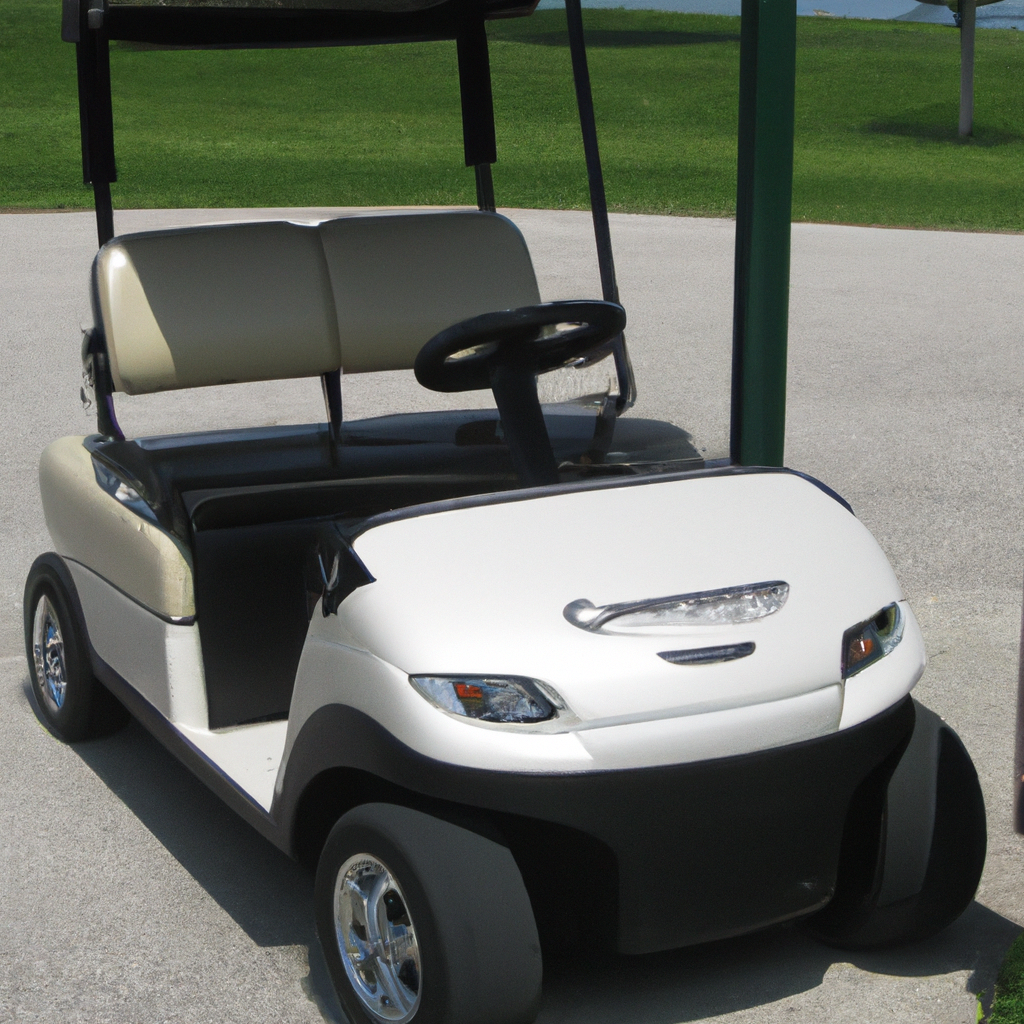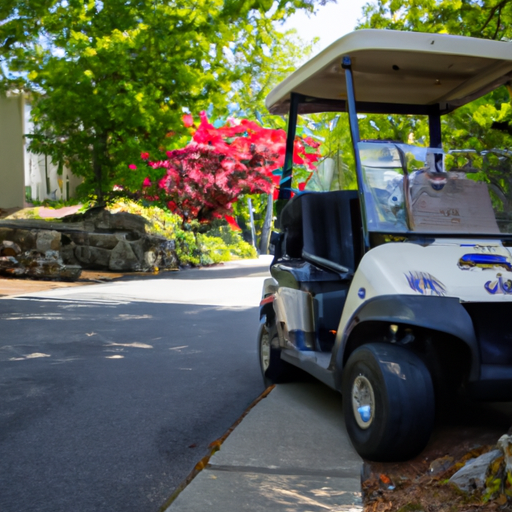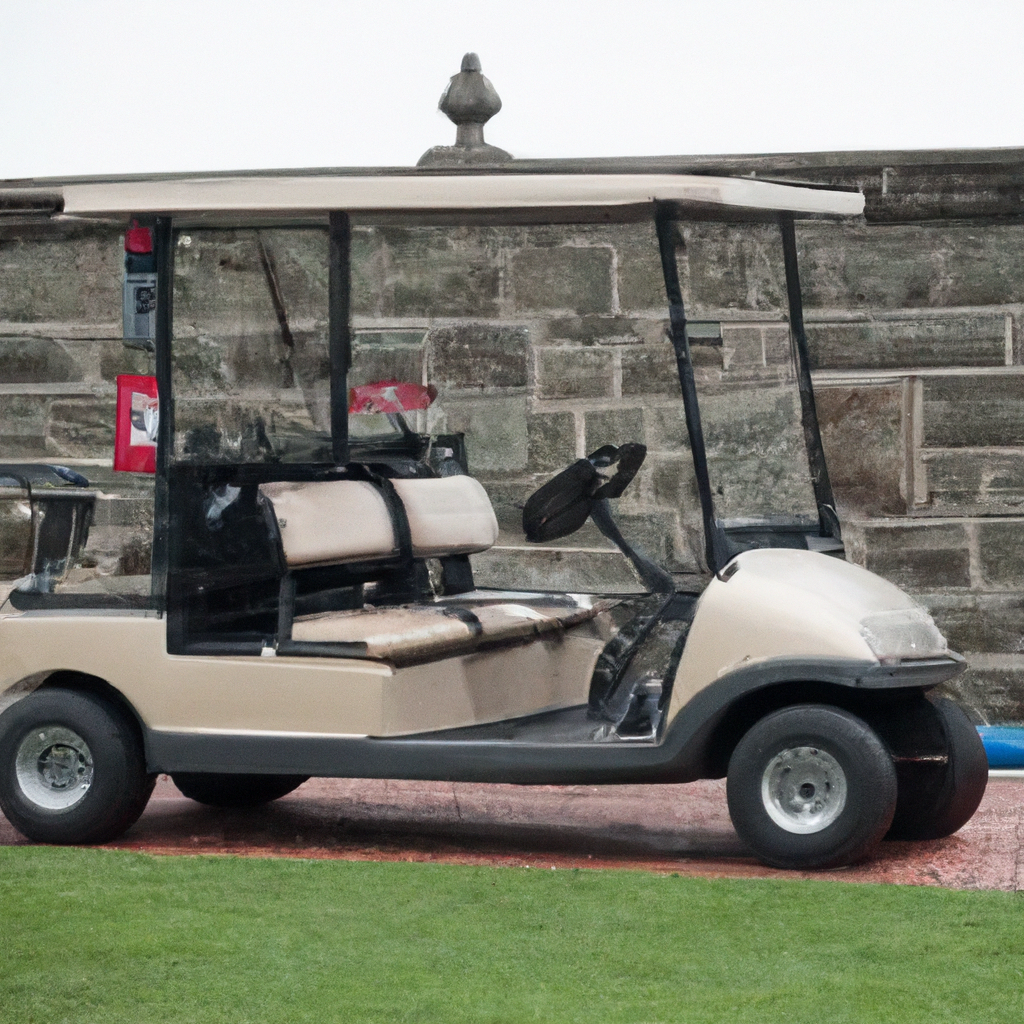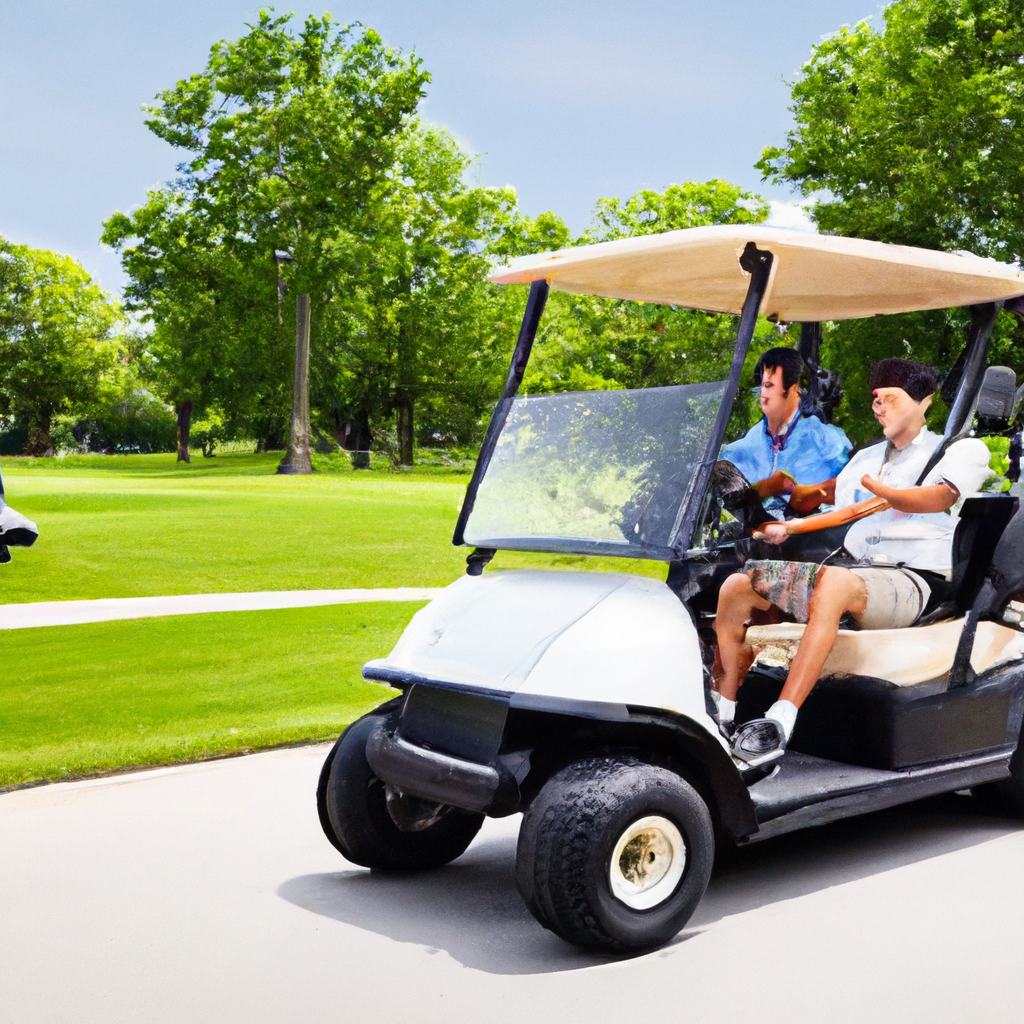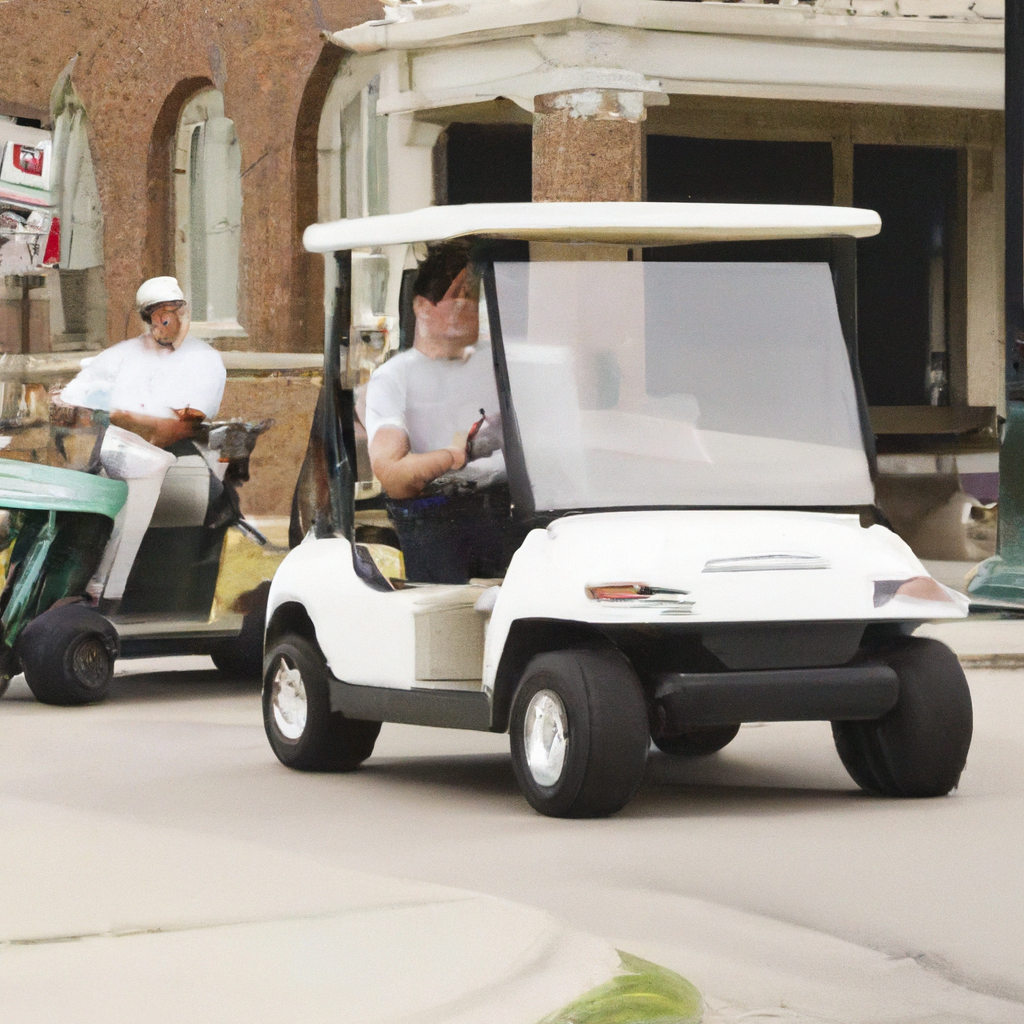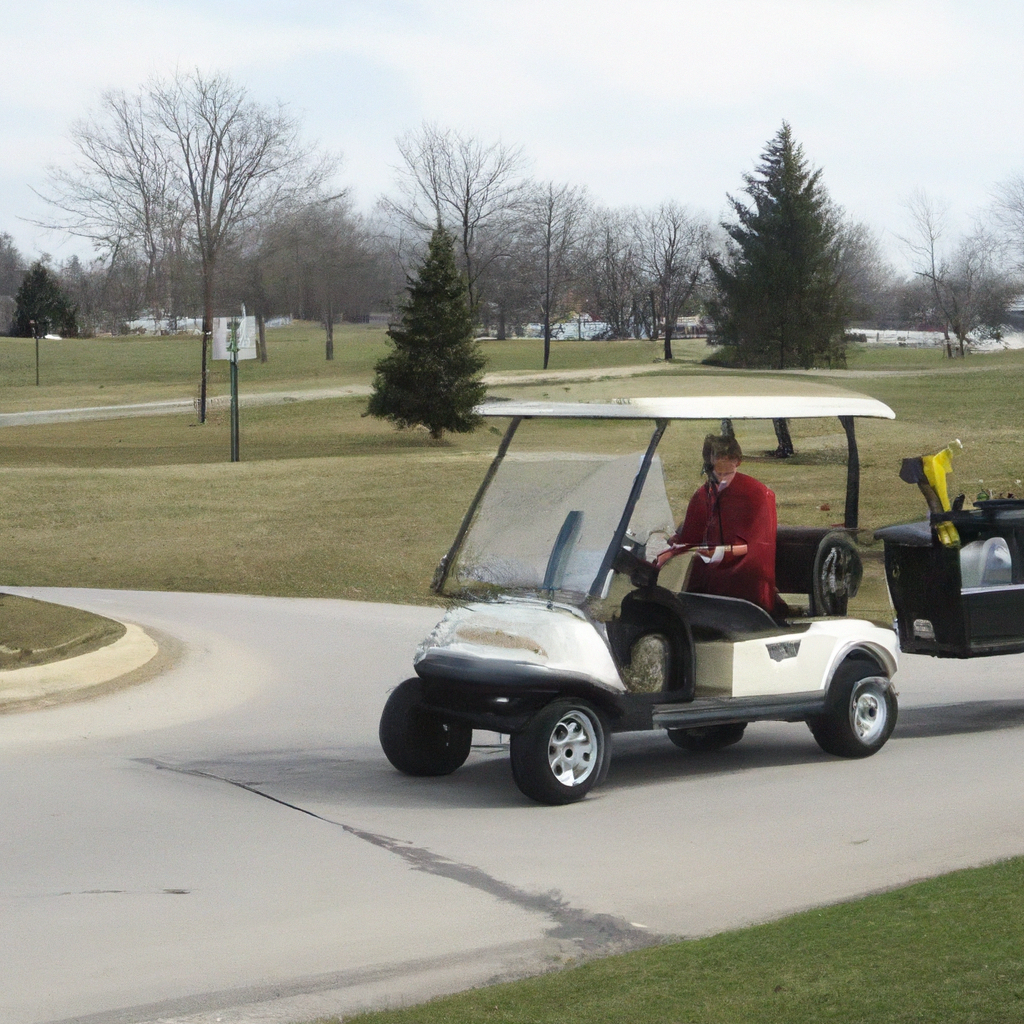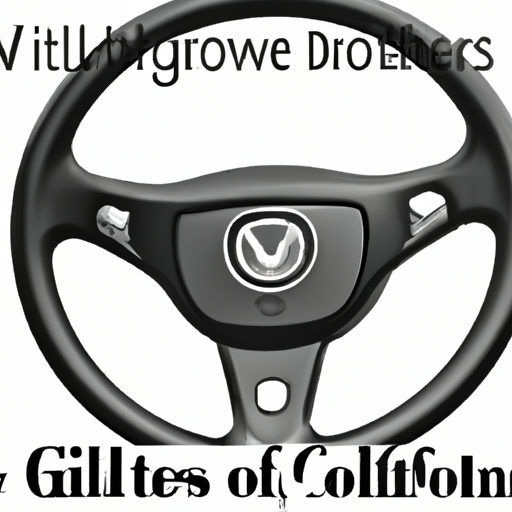Are Evolution Golf Carts worth the investment? If you’ve been pondering this question, you’re not alone. With their sleek design and advanced features, Evolution Golf Carts have become increasingly popular among golf enthusiasts and leisure seekers alike. These modern vehicles offer a smooth and comfortable ride, along with innovative technology and customizable features to enhance your golfing experience. In our article, we will explore the benefits of investing in an Evolution Golf Cart and help you decide if it’s the right choice for you.

Introduction
When it comes to golf carts, the evolution is undeniable. In recent years, the emergence of Evolution Golf Carts has been turning heads and capturing attention. With their sleek design, advanced features, and impressive performance, these innovative vehicles are revolutionizing the golf cart industry. But are Evolution Golf Carts really worth the investment? In this comprehensive article, we will explore the benefits, features, application areas, user experiences, and potential drawbacks of Evolution Golf Carts, helping you make an informed decision before taking the plunge.
Benefits of Evolution Golf Carts
Improved Performance
One of the standout features of Evolution Golf Carts is their superior performance compared to traditional counterparts. Equipped with powerful electric powertrains, these carts offer instant torque, ensuring a smooth and responsive ride. The acceleration is impressive, allowing you to navigate hilly terrains and challenging landscapes with ease. Whether you’re a professional golfer or an enthusiast, the enhanced performance of Evolution Golf Carts will undoubtedly elevate your golfing experience.
Eco-Friendly
In an era where sustainability is of utmost importance, Evolution Golf Carts have embraced environmentally-friendly technology. With zero tailpipe emissions, these carts operate on clean energy, reducing air pollution and contributing to a greener future. By opting for an Evolution Golf Cart, you can enjoy guilt-free golfing while minimizing your carbon footprint.
Cost Savings
Investing in an Evolution Golf Cart can bring about significant cost savings in the long run. Traditional gas-powered golf carts require regular fuel refills, adding up to hefty expenses over time. Evolution Golf Carts, on the other hand, run on electric power and feature powerful batteries that can be recharged inexpensively. Additionally, the low maintenance requirements of these carts translate to fewer repair costs and overall savings. By switching to an Evolution Golf Cart, you can not only enjoy eco-friendly transportation but also keep more money in your pocket.
Customizability
Evolution Golf Carts offer a perfect blend of functionality and style, allowing you to personalize your ride according to your preferences. Whether you want to add custom paintwork, unique accessories, or upgraded features, these carts provide endless customization options. With Evolution Golf Carts, you can showcase your personality and make a statement on the golf course or any other application area.
Durability
Designed with high-quality materials and superior craftsmanship, Evolution Golf Carts are built to last. With robust frames and sturdy construction, these carts can withstand the rigors of daily use, ensuring longevity and durability. Whether you encounter rough terrains or encounter unpredictable weather conditions, you can rely on your Evolution Golf Cart to endure and perform flawlessly.
Low Maintenance
Maintenance is often an aspect that can deter potential golf cart owners. However, with Evolution Golf Carts, maintenance becomes a worry of the past. Thanks to their electric powertrain and simplified mechanical systems, the maintenance requirements are significantly reduced. Say goodbye to regular oil changes, fuel filter replacements, and frequent engine inspections. Evolution Golf Carts are low-maintenance vehicles that allow you to focus on enjoying your rounds of golf rather than worrying about mechanical issues.
Comfortability
Evolution Golf Carts have revolutionized the concept of comfort in golf carts. Featuring ergonomic seating, ample legroom, and advanced suspension systems, these carts offer a smooth and comfortable ride. No matter how long your golfing session is, you can count on the plush seats and luxurious amenities of an Evolution Golf Cart to keep you relaxed and at ease. Comfort should never be compromised when you’re enjoying your favorite sport, and Evolution Golf Carts ensure that you can play in utmost comfort and style.
Features of Evolution Golf Carts
Electric Powertrain
The electric powertrain in Evolution Golf Carts is the driving force behind their exceptional performance and efficiency. With quick acceleration, instant torque, and smooth ride quality, this advanced powertrain enhances the overall golfing experience. Say goodbye to the noise and fumes of traditional gas-powered carts and embrace the silence and power of electric propulsion.
Powerful Batteries
Evolution Golf Carts are equipped with high-capacity batteries that ensure optimal performance and endurance. These powerful batteries offer extended range on a single charge, allowing you to explore every corner of the golf course without worrying about running out of power. With fast-charging capabilities, you can quickly recharge your Evolution Golf Cart and get back on the course in no time.
Advanced Suspension
The suspension systems in Evolution Golf Carts are designed to deliver a comfortable and stable ride. Whether you’re traversing uneven terrains or encountering bumps along the way, the advanced suspension absorbs shocks and vibrations, ensuring a smooth and enjoyable experience. Say goodbye to jarring rides and hello to a more pleasant golfing journey.
Enhanced Safety Features
Safety is paramount, and Evolution Golf Carts take it seriously. With features such as advanced braking systems, seatbelts, and optional safety accessories, these carts prioritize your well-being. Whether you’re navigating busy golf courses or crowded residential communities, you can rely on the built-in safety measures of Evolution Golf Carts to provide peace of mind.
Smart Technology Integration
Evolution Golf Carts are equipped with state-of-the-art technology, enhancing both convenience and entertainment. From touchscreen displays and GPS navigation systems to Bluetooth connectivity and built-in speakers, these carts bring modern amenities to the golf course. Stay connected, enjoy your favorite music, and never miss a beat with the smart technology integration of Evolution Golf Carts.
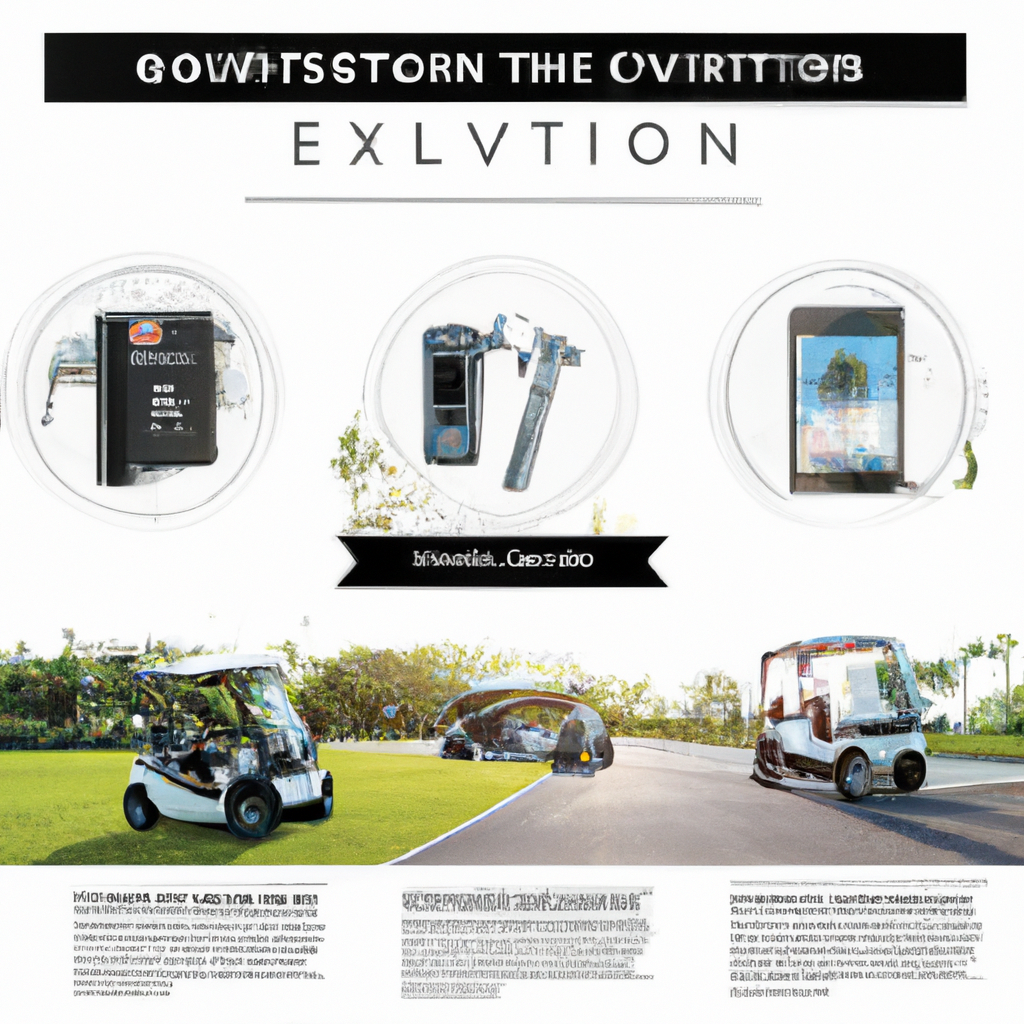
Comparison with Traditional Golf Carts
Efficiency and Speed
When comparing Evolution Golf Carts to traditional golf carts, the difference in efficiency and speed is evident. Evolution Golf Carts, powered by electric drivetrains, offer instant acceleration and higher top speeds. On the other hand, gas-powered carts tend to have slower acceleration and more limited top speeds. The electric powertrains of Evolution Golf Carts provide a responsive and exhilarating driving experience.
Noise Level
One of the key advantages of Evolution Golf Carts over traditional counterparts is their remarkably low noise level. Gas-powered golf carts can be noisy, causing distractions and disruptions on the golf course. Evolution Golf Carts, however, operate silently, allowing you to focus on your game and enjoy a peaceful ambiance while maneuvering through the greens.
Environmental Impact
When it comes to environmental impact, Evolution Golf Carts clearly have the upper hand. Traditional gas-powered carts emit greenhouse gases and contribute to air pollution. In contrast, Evolution Golf Carts produce zero emissions, reducing their carbon footprint and promoting eco-friendliness. By choosing an Evolution Golf Cart, you’re not only benefiting yourself but also the planet.
Long-Term Cost
While the initial investment in an Evolution Golf Cart may be higher compared to a traditional gas-powered cart, the long-term cost analysis tells a different story. With the rising prices of gasoline and the low cost of electricity, the operational expenses of Evolution Golf Carts are significantly lower. Additionally, the reduced maintenance requirements and longer lifespan of these electric carts translate to additional cost savings in the long run.
Upgradability
Evolution Golf Carts offer more opportunities for upgrades and customization compared to traditional carts. While both types can be modified to a certain extent, Evolution Golf Carts have a wider range of options available. From advanced technology enhancements to customized paintwork and accessories, these carts allow you to transform your golfing experience and make it uniquely yours.
Application Areas
Golf Courses
Unsurprisingly, golf courses remain the primary application area for Evolution Golf Carts. With their superior performance, enhanced features, and eco-friendly nature, these carts are a perfect fit for golfing enthusiasts. Whether you’re a professional golfer or enjoy casual rounds at your local course, Evolution Golf Carts offer the ideal means of transportation on the greens.
Residential Communities
Residential communities often encompass large areas with amenities such as parks, recreational facilities, and common areas. Evolution Golf Carts provide an efficient and convenient mode of transportation within these communities. Whether it’s running errands, visiting neighbors, or simply enjoying a leisurely ride around the neighborhood, these carts offer a sustainable and stylish solution.
Campuses and Resorts
With their versatile nature, Evolution Golf Carts are an excellent choice for campuses and resorts. Whether it’s a sprawling university campus or a luxurious resort complex, these carts provide an efficient and eco-friendly means of transportation. Shuttle services, guest transportation, and maintenance staff mobility can all be facilitated by the reliability and performance of Evolution Golf Carts.
Commercial Establishments
Beyond the recreational applications, Evolution Golf Carts can also serve commercial purposes. From airport transportation to corporate campuses, these carts offer a convenient and cost-effective alternative to traditional vehicles. With their customizability and branding options, businesses can showcase their logos and style while efficiently moving people and goods.
Factors to Consider before Investing
Intended Use
Before investing in an Evolution Golf Cart, it is crucial to consider your intended use. Do you primarily plan to use it for golfing purposes, or do you require a cart for transportation within a specific area? Consider the terrain, distance requirements, and any additional features that may be necessary for your intended use.
Budget
While Evolution Golf Carts offer numerous benefits, they also come with a price tag. Consider your budget and determine the maximum amount you’re willing to invest. Ensure that you are comfortable with the long-term cost analysis and maintenance expenses associated with these carts.
Terrain
The terrain in which you will be using your Evolution Golf Cart plays a significant role in determining the suitable model. If you plan to navigate steep hills or rugged terrains, opt for a cart with advanced suspension and powerful battery capacity. On the other hand, if you’ll be primarily driving on flat surfaces, a cart with standard features may suffice.
Charging Infrastructure
A crucial factor to consider when investing in an electric cart is the availability of a charging infrastructure. Ensure that the areas where you plan to use your Evolution Golf Cart have accessible charging stations. If charging points are limited or nonexistent, it may be beneficial to explore alternative options or consider installing a charging solution.
Maintenance Support
While Evolution Golf Carts are known for their low maintenance requirements, it is essential to consider the availability of maintenance and repair support in your area. Ensure that there are authorized service centers or technicians who can assist with any potential issues that may arise.
User Experiences and Reviews
Real-life Testimonials
Numerous golfers and proud owners of Evolution Golf Carts have shared their positive experiences and testimonials. Customers praise the performance, comfort, and style of these carts, highlighting their excellent value for money. Real-life testimonials provide valuable insights into the satisfaction and enjoyment that come from owning an Evolution Golf Cart.
Industry Expert Opinions
Industry experts have recognized the innovation and advantages that Evolution Golf Carts bring to the market. Their reviews and opinions shed light on the technical aspects, performance comparisons, and market trends. By taking into account the insights provided by experts, potential buyers can gain a comprehensive understanding of the benefits and drawbacks of these carts.
Comparative Analysis
Comparative analysis among Evolution Golf Carts and other competitors in the market provides a holistic perspective on the strengths and weaknesses of each option. By considering the varying features, performance metrics, and user experiences, potential buyers can make informed decisions based on their specific requirements and preferences.
Long-Term Cost Analysis
Initial Investment
The initial investment in an Evolution Golf Cart may be higher compared to traditional gas-powered carts. However, the overall cost analysis over time reveals the value and potential savings associated with these carts. By factoring in the lower operational costs, reduced maintenance expenses, and longer lifespan, the higher initial investment becomes justifiable in the long run.
Operating Costs
Operating costs for Evolution Golf Carts primarily revolve around electricity consumption. The cost of electricity for recharging the batteries is significantly lower compared to the expenses incurred by regular fueling of gas-powered carts. Additionally, the reduced maintenance requirements of electric carts result in lower ongoing expenses.
Resale Value
Another aspect to consider in the long-term cost analysis is the potential resale value of Evolution Golf Carts. As the demand for electric vehicles continues to rise, these carts tend to retain their value better compared to gas-powered counterparts. When the time comes to upgrade or sell your Evolution Golf Cart, you can expect a higher resale value, effectively reducing the overall cost of ownership.
Drawbacks and Potential Limitations
Initial Cost
As mentioned earlier, the initial cost of an Evolution Golf Cart can be higher compared to traditional golf carts. This higher price point may deter potential buyers who are primarily focused on the upfront expenses. However, considering the long-term cost analysis and the numerous benefits offered by these carts, the higher initial cost is outweighed by the overall value and savings.
Limited Range
One potential limitation of Evolution Golf Carts is their limited range on a single charge. Depending on the model and battery capacity, the distance you can travel may be restricted. If you plan to use your cart for extensive distances or require all-day use without recharging, it is crucial to consider the range specifications and choose a model that meets your requirements.
Charging Time
Another potential drawback is the charging time required for Evolution Golf Carts. Unlike gas-powered carts where refueling is relatively quick, recharging the batteries of an electric cart takes significantly longer. It is important to plan your charging schedule accordingly, allowing yourself sufficient time to recharge between usage.
Availability and Accessibility
Depending on your location, the availability and accessibility of Evolution Golf Carts may be limited. These carts may not be as widely available as traditional gas-powered carts, and authorized service centers may be fewer in number. Ensure that you have access to purchase the cart and receive maintenance support in your area before making a decision.
Terrain Limitations
While Evolution Golf Carts excel in various terrains, there may be limitations depending on the specific model and features. If you plan to navigate extremely rugged terrains or encounter steep hills regularly, it is crucial to choose a cart that is designed to tackle such conditions adequately.
Lack of Tradition
For some golf enthusiasts, the tradition of using a gas-powered golf cart may hold sentimental value. The sleek and futuristic design of Evolution Golf Carts may not appeal to those who prefer a more traditional aesthetic. It is important to consider your personal preference and attachment to tradition before opting for an electric cart.
Conclusion
In conclusion, Evolution Golf Carts offer a plethora of benefits, advanced features, and a sustainable future for golf cart enthusiasts. From improved performance and eco-friendliness to cost savings and customizability, these carts have taken the golfing experience to new heights. Though they come with a higher initial cost and some potential limitations, the overall value and long-term savings make them a worthy investment. Whether you are a passionate golfer or need a reliable mode of transportation within specific areas, Evolution Golf Carts provide an efficient, stylish, and eco-friendly solution. So, take the leap, embrace the evolution, and elevate your golfing experience with an Evolution Golf Cart.

